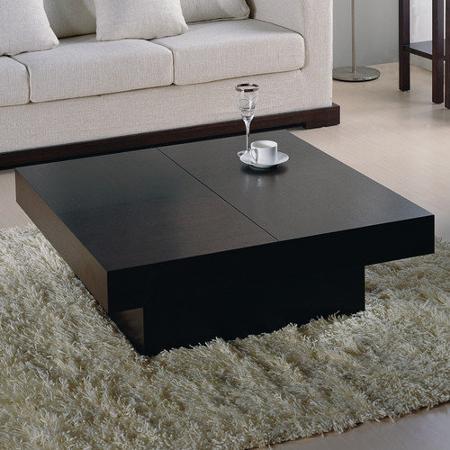Hi!
I need a coffee table for my living room. After an extensive research I've noticed that if I want something in my taste, the price is sky high (to me) for a relatively simple thing.
Hence now I'm thinking about building my own table. I want it to look something like in the photograph below. Just simple, with no hidden storages etc.
I was thinking about building the structure of an MDF or plywood and I think that I should not have any particular problem with that (I might be wrong though?). The problem is painting. I do not have much expirence in this field. I want the surface to be hard, durable and shiny (high gloss). My questions are:
1. Are MDF or plywood (which?) right materials to use?
2. Is it possible to achieve a smooth and glossy surface without a specialist equipment?
3. What kind of paint, primers, (varnish?), equipment do I need and how expensive they would be?
The job could be done in my friends garage so the time or smell are not an issue. The structural material would be cut to size by my local wood supplier. I've got a 1/2 size sander. It is not a top class stuff but it does the job.
Thanks you guys in advance for any input!
I need a coffee table for my living room. After an extensive research I've noticed that if I want something in my taste, the price is sky high (to me) for a relatively simple thing.
Hence now I'm thinking about building my own table. I want it to look something like in the photograph below. Just simple, with no hidden storages etc.
I was thinking about building the structure of an MDF or plywood and I think that I should not have any particular problem with that (I might be wrong though?). The problem is painting. I do not have much expirence in this field. I want the surface to be hard, durable and shiny (high gloss). My questions are:
1. Are MDF or plywood (which?) right materials to use?
2. Is it possible to achieve a smooth and glossy surface without a specialist equipment?
3. What kind of paint, primers, (varnish?), equipment do I need and how expensive they would be?
The job could be done in my friends garage so the time or smell are not an issue. The structural material would be cut to size by my local wood supplier. I've got a 1/2 size sander. It is not a top class stuff but it does the job.
Thanks you guys in advance for any input!



